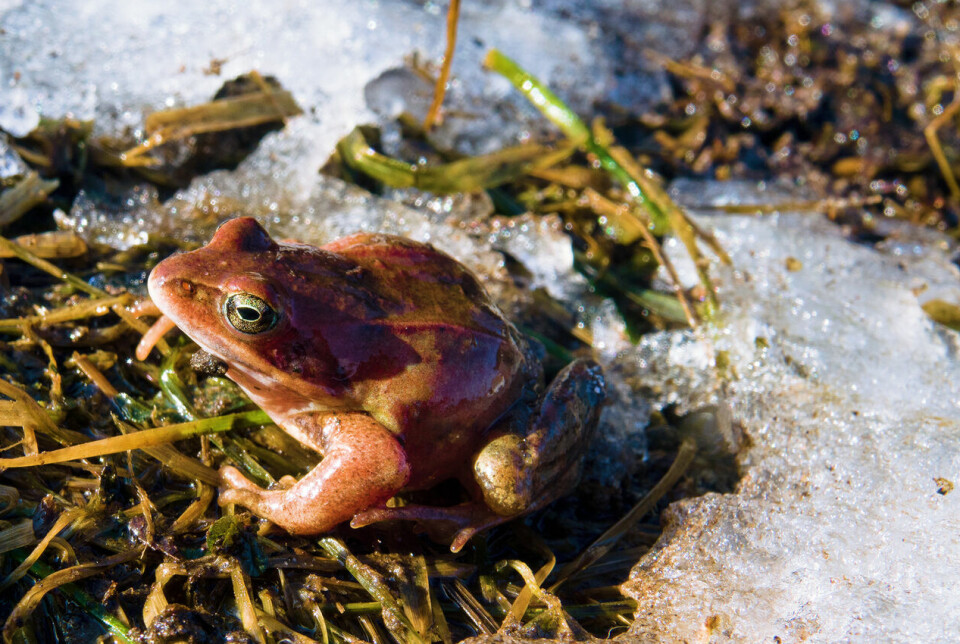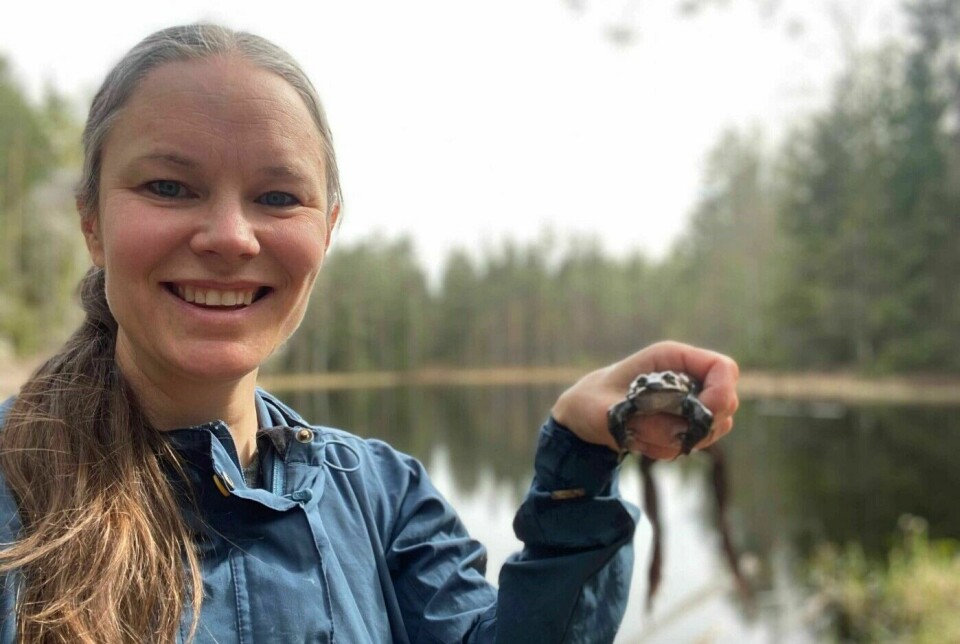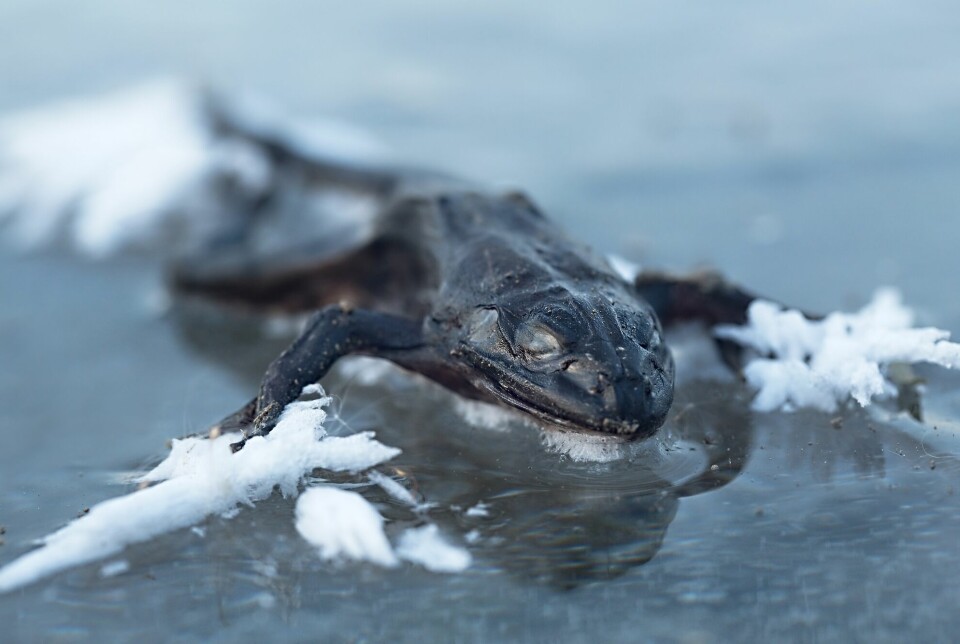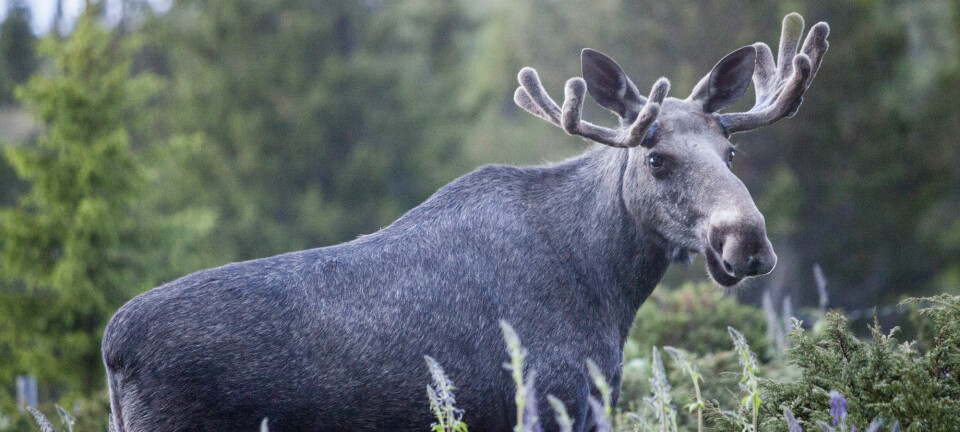
How do frogs survive the winter?
The freezing temperatures can be lethal to frogs, but the cold actually has some advantages.
Soon the snow will melt, and frogs will reappear in ponds to mate. But not all of them will have survived the cold weather.
“Many die during winter hibernation,” researcher Annette Taugbøl at the Norwegian Institute for Nature Research tells sciencenorway.no.
She does not have exact numbers on how many survive. But perhaps as few as one in five wake up after the winter, the amphibian researcher estimates.
Heaviest water at four degrees
So, what does it take for the frogs to survive ice, snow, and sub-zero temperatures?
It depends a lot on where they hide, Taugbøl says.

Many of the frogs living in Norway overwinter at the bottom of ponds. The explanation for this lies in the water's properties.
Since water is heaviest at four degrees Celsius, this water sinks to the bottom. In winter, the top of the water usually freezes to ice. Right below, it will be closer to the freezing point. But at the bottom, the water is relatively warm.
Here, the amphibians hibernate and get oxygen from the water through their skin.
Look for cosy hiding spots
Until one year, the pond completely freezes to the bottom.
“It may have been fine to overwinter in the pond for many years, and then suddenly it doesn't work,” says Taugbøl.
Then many dead frogs float around in the pond when the ice melts. Such mass deaths can also affect the frogs if the ice melts too slowly, because they run out of oxygen.
But some frogs find completely different hiding places.
They can burrow under moss and leaves or find cavities in fallen trees.

Some also find a suitable crack in a stone wall or burrow into a bog.
“Frogs prefer messy places where there are more places to hide under, says the amphibian researcher.
Everything slows down in the cold
Even if the frogs find a cosy hiding spot, it is pretty incredible that they can survive without eating for several months.
This is where hibernation comes to their rescue. Many of the frogs are almost like the living dead while they wait for spring. The heart stops, and the kidneys cease to function.
And then the cold is actually an advantage.
Frogs, like other amphibians, are cold-blooded. This means that their entire bodies cool down significantly when they hibernate.
Then everything inside the frogs' bodies slows down, just like your food lasts longer when you put it in the fridge or freezer.
The wood frog produces its own antifreeze
The wood frog, which lives in the USA and Canada, has another defence mechanism in the cold.
It can withstand being completely frozen.
The reason for this lies in its blood. The amphibians actually produce their own antifreeze when the temperature drops below zero.
This antifreeze is made up of the sugar glucose.
This sugar lowers the freezing point of the organs to below zero degrees Celsius. As a result, the fluid surrounding the organs can freeze to ice without the vital parts of the body being damaged.
Lays 2,000 eggs
Regardless, frogs account for many dying. Just as with fish, their strategy is to have a lot of offspring.
The most common frog in Norway, the moor frog, typically lays 2,000 eggs.
Of the tadpoles that hatch from the eggs, many will die before they reach adulthood, says Taugbøl. And among those that develop into frogs, only a few will make it through the next winter.
———
Translated by Alette Bjordal Gjellesvik
Read the Norwegian version of this article on forskning.no







































